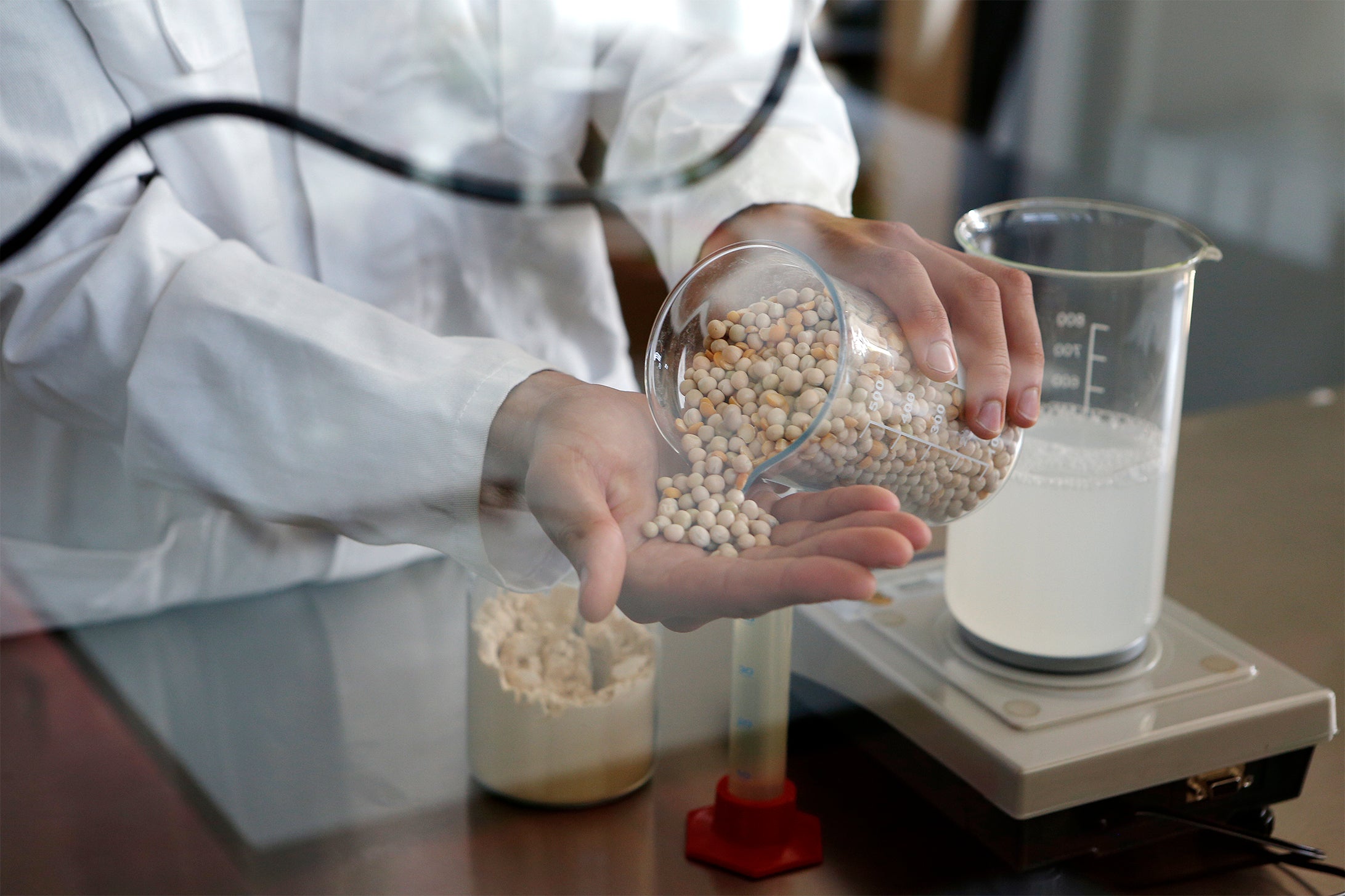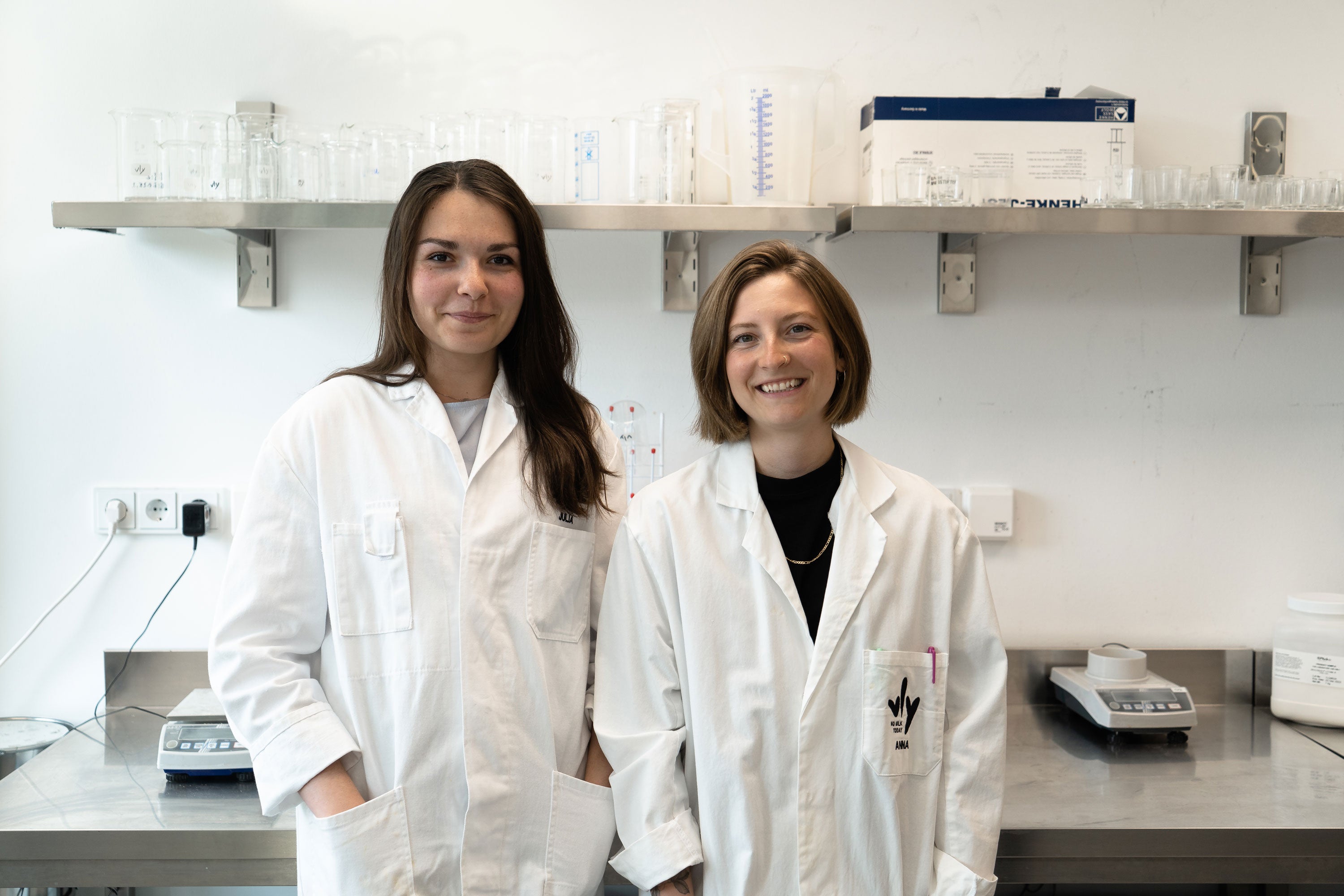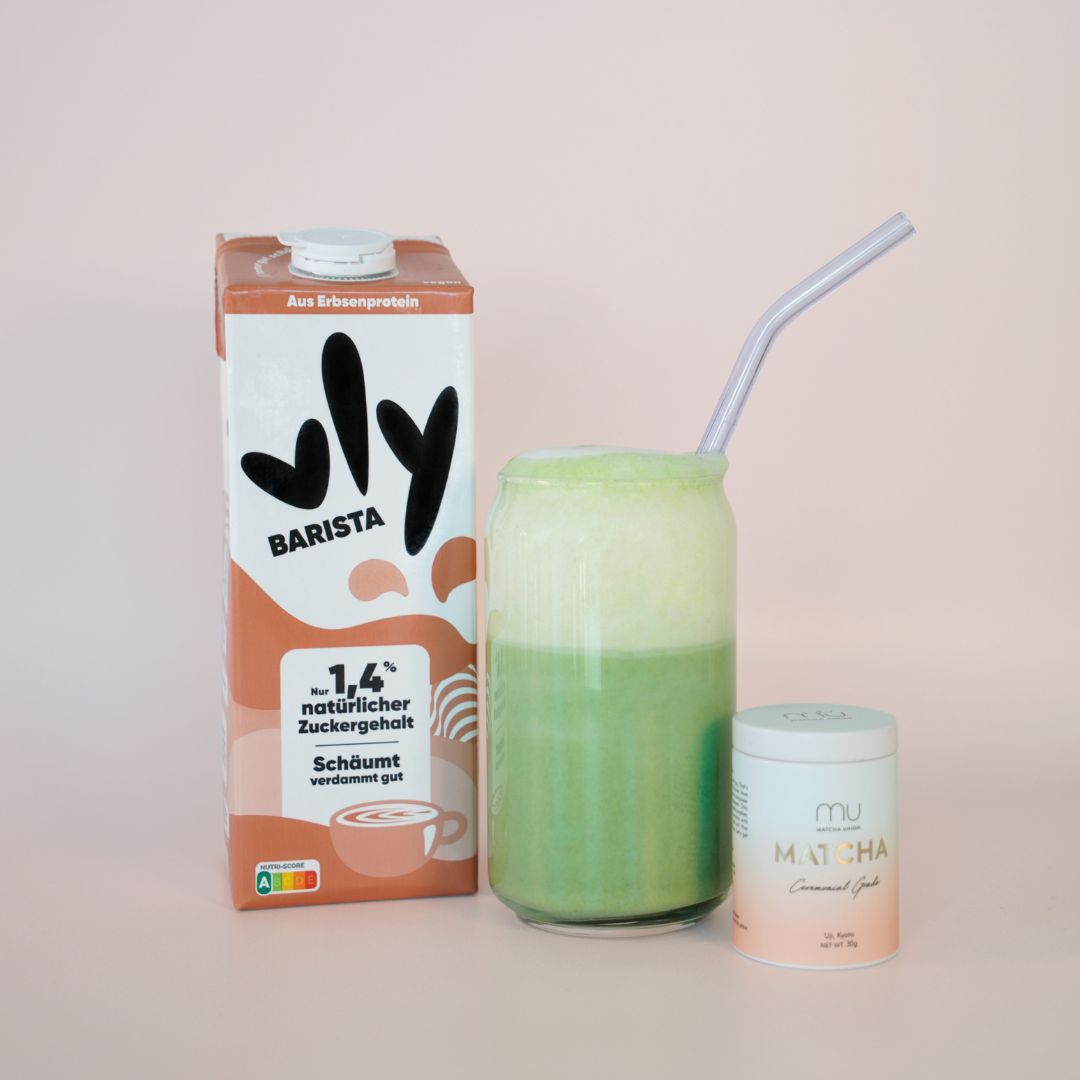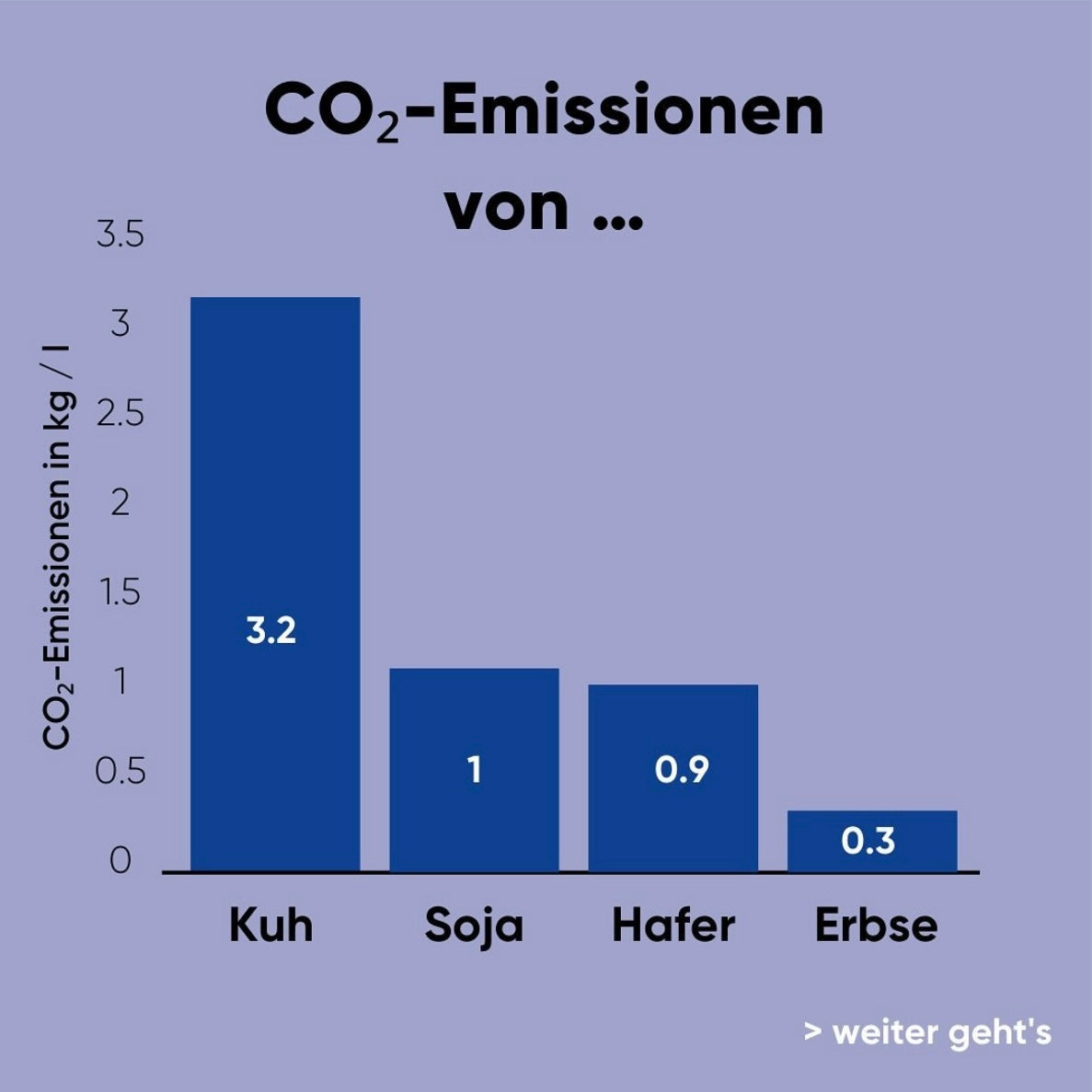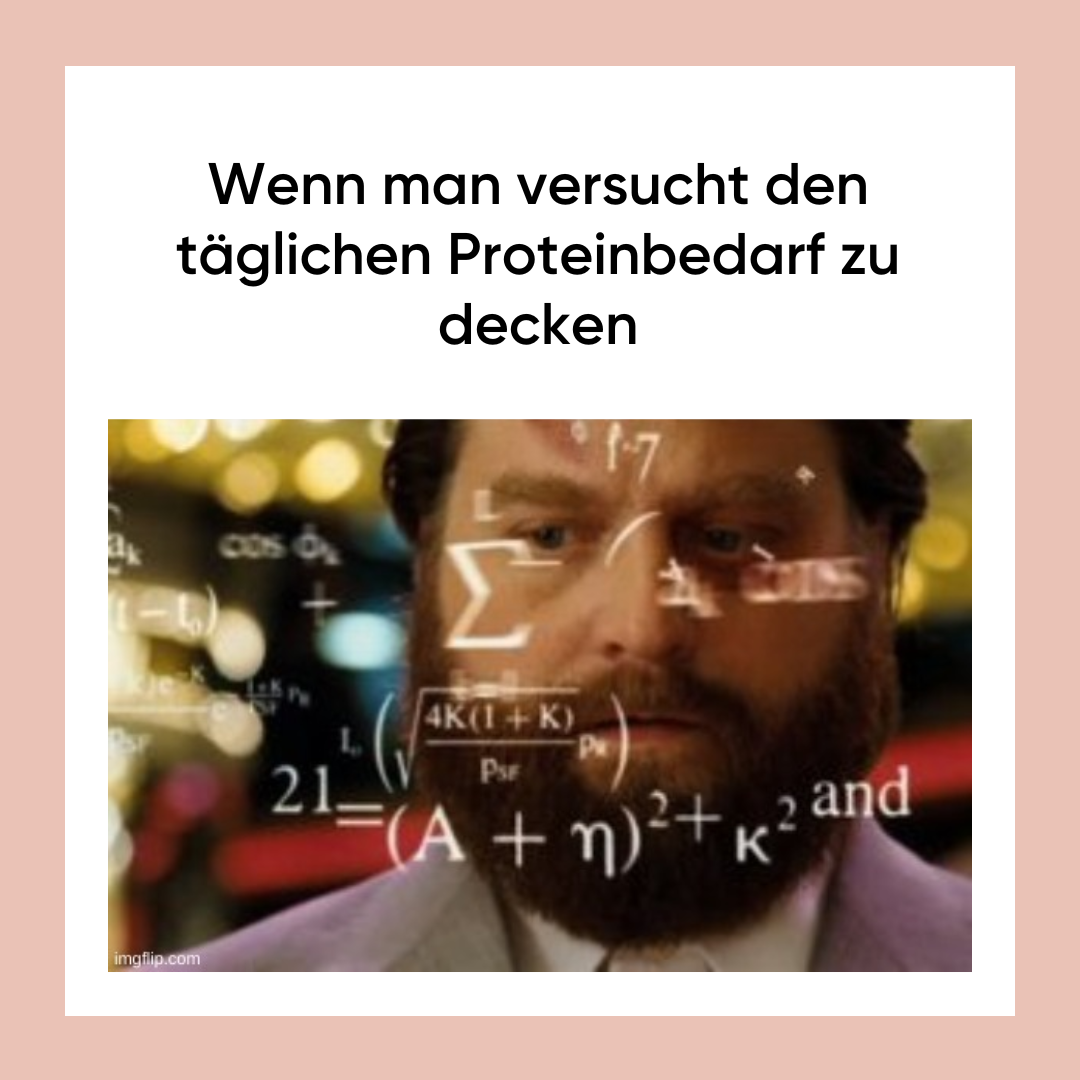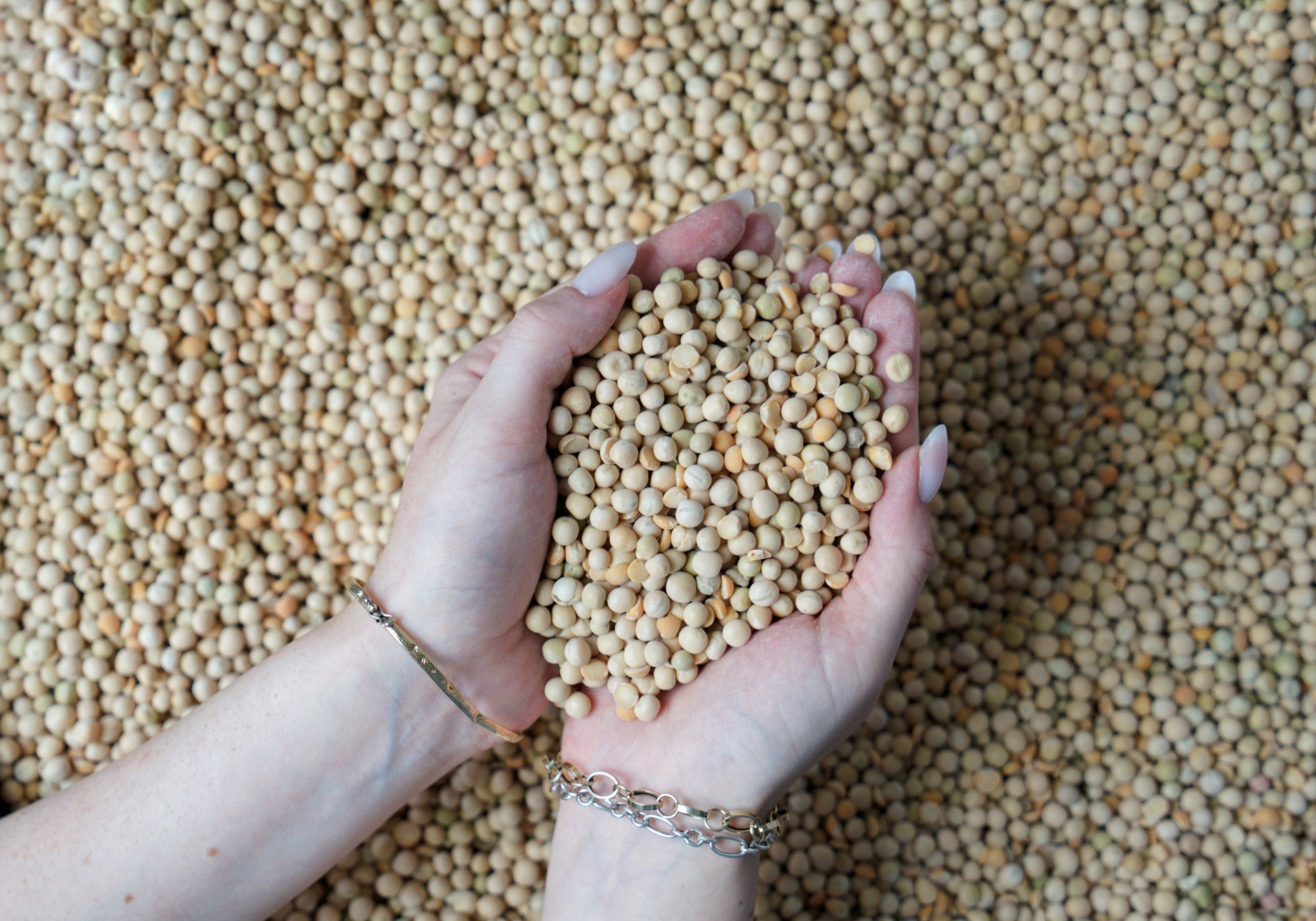
Production: How we milk our peas
Today we take you with us - wherever peas are used as milk and yoghurt alternatives. From the field where the peas grow to the dairy where milk and yoghurt (alternatives) flow. Make yourself comfortable, let's get started!
ON THE FIELD

We are standing in a field in northern France. Green plants grow here, between 0.5 and 2 m high, with white flowers. Hard to believe, but that's it - our pea. It grows here as an annual from May to June until it is harvested and processed.
💡 The pea belongs to the legume plant family. These are legumes that can bind nitrogen from the air. They can accumulate between 50 and several hundred kilograms in the soil per hectare and year. This saves fertilizer and thus enormous amounts of energy and emissions. (1)
IN THE FACTORY
In a nearby factory, the protein that we later need for our products is extracted from the raw peas. How it works? We asked ourselves the same question and received the following answer from Moritz (founder and Head of Production):

Translated this means: The pea is mixed with water and ground. A mixture of water, pea protein, starch and fibers is produced. Then starch and fibers are dissolved and as a last step the mixture is dried. What remains is our pea protein! Very easy.
AT THE MANUFACTURER

We leave France and drive to Rhineland-Palatinate. The pea protein is there as well, where it meets the other dry ingredients, which are mixed together well before proceeding.
IN THE DAIRY

Almost there. We are in a dairy in North Rhine-Westphalia. This is where the dry ingredients are mixed with the liquid ones. The manufacturing process is quite similar to that of cow's milk. In fact, the mixture is homogenized and subjected to ultra-high temperatures before being filled into Tetra-Paks.
Now you know how we milk our peas... er, how we turn peas into delicious milk and yogurt alternatives. And now? Here you will find inspiration on what you can do with it.
source
1. Counting peas (Grefe, Christian), 2022: https://www.zeit.de/2022/29/erbse-gesunde-ernaehrung-genom/komplettsicht

